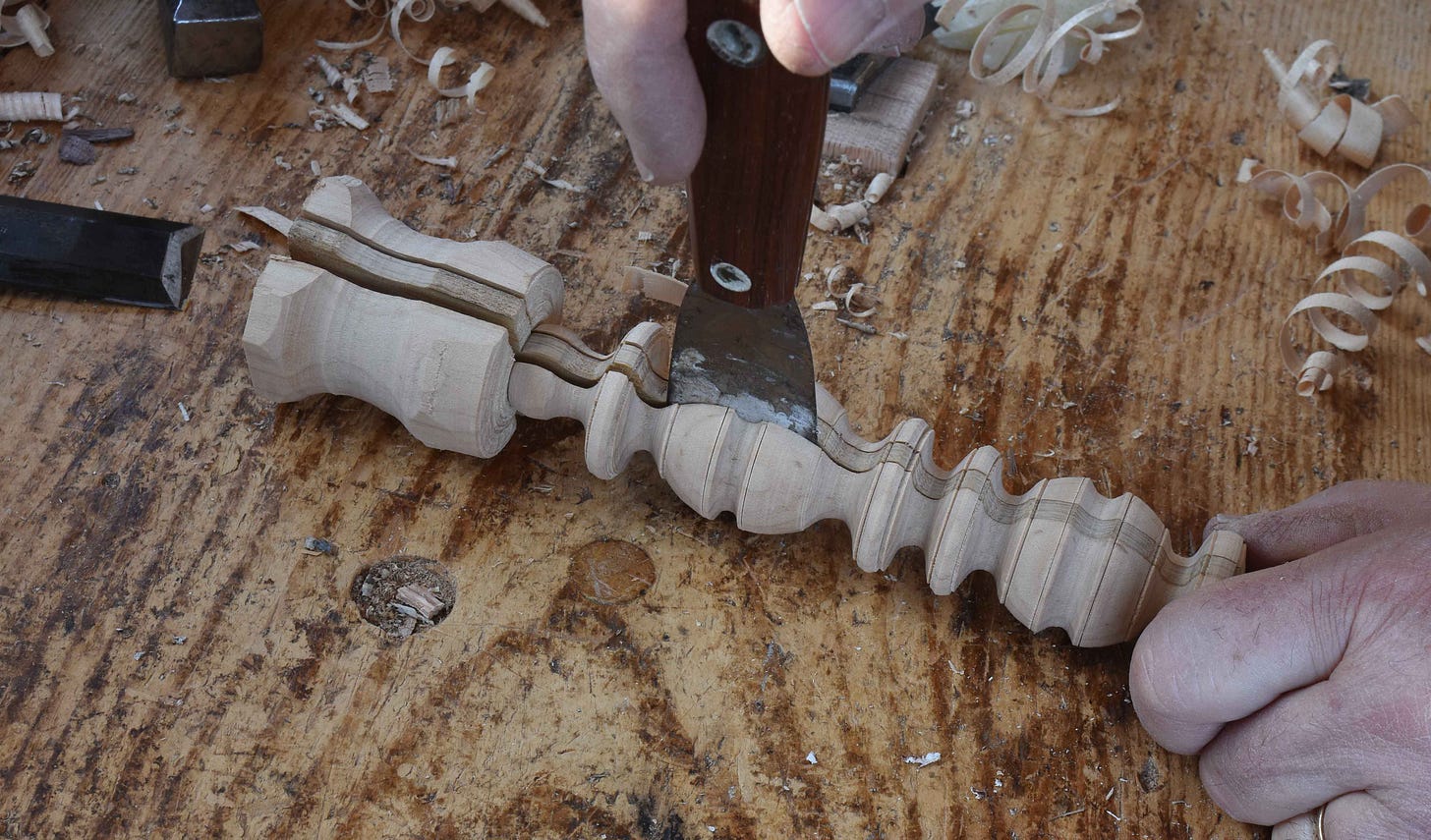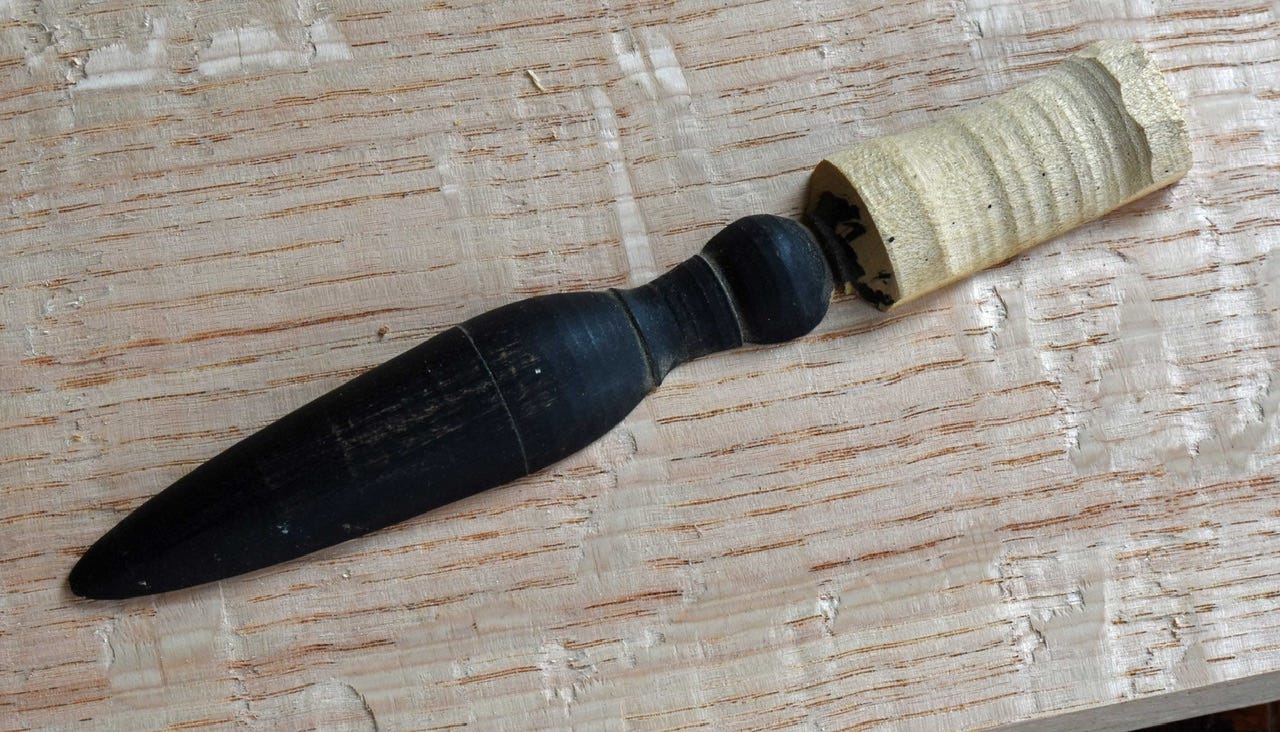Time to introduce some readers to the cupboard I’m making. The original was made around the 1680s in northern Essex County Massachusetts. It is now in the collection at the Massachusetts Historical Society. I finished my first copy (below) early in 2022 and started a 2nd one later that year.
Lately I’ve not had much time in the shop, just fitting in sessions here and there. I’ve split and planed red oak boards for the drawer bottoms - those are now stacked & drying. In between other bits I’ve been prepping maple for the turning blanks. There’s lots of halved applied turnings - so I can fill odd bits of time easily with turned work.
The way I make these is to rive & plane up 2 sections of maple. When drier, they’ll be glued-up with a thin spacer between them. It’s most any hardwood, about 1/4” thick. In my shop it’s usually oak. The function of this spacer is to engage the points of the pole lathe - if the blank was just the two maple bits, the glue line would be right where the points press into the turning. Then it would blow up when you tighten the piece in the lathe. Seen it happen.
I try to make them extra long so I can wrap the lathe cord around a section out of the way of the turning. Once I’ve turned a bunch of them I steam them to soften the hide glue, then split them apart.
There’s at least 16 turnings that are spindle-types; then later I’ll discuss turning the eggs and buttons - there’s even more of them. I think this time I’ll paint them before separating them. Steaming them raises the grain a bit and I’m guessing the paint will reduce that some. We’ll see. I found one leftover from the first cupboard. This turning goes on the middle of the bottom drawer front - so it’s a case of having to make two but only using one. Good thing I saved it. To give you an idea of scale, the finished turned bit is 4 1/2” long and 1” in diameter at its widest point. So pretty small.









These turnings are so impressive, but my favorite remains the Currier Gallery cupboard. I was extremely annoyed that when the Currier commissioned a study of the cupboard from Mussey Associates, they used our notes line-for-line without citing them. I also pointed out in their preliminary report that they had flipped the photo of the cupboard side-to-side. 95% of their "new" conclusions came from our notes. The only things they found were by either Xray or intrusive disassembly, which we could not do. The other thing we did not do was get paid.
Sorry, that's Jane Nylander. You can see a spectacular result of a restoration executed using information provided by all three authors, Alan Miller, Peter Follansbee, and me, in the 2001 issue of American Furniture. That cupboard was in the Godfrey Collection in Milwaukee, now at Chipstone Foundation.